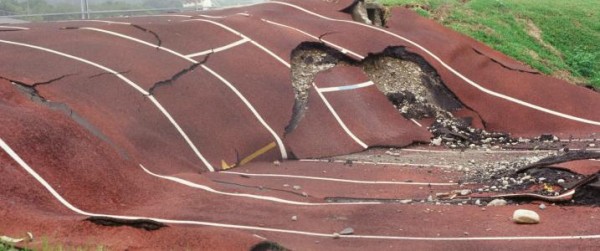By Ana Verayo, | November 28, 2016

Scientists suggest that giant earthquakes are likely to occur in regions with smoother, flat fault lines in the Pacific rim. (OSU)
Scientists and seismologists say that smoother and flat fault lines can produce potential giant earthquakes.
In this new study, a team from the University of Oregon sought to identify which parts of the world are prone to these giant quakes, or earthquakes, which can register a magnitude of 8.5 or more.
Like Us on Facebook
Seismologists say that the rim around the Pacific Ocean is the region where all continents converge. Along the ocean floor, this is also where the diving tectonic plate called a subduction zone where large earthquakes are produced.
Previous theories held that giant earthquakes only occur in younger, fast-moving subduction zones. However, recent earthquakes in the Indian Ocean in 2004 on a slow moving plate and during 2011 Tohoku-Oki earthquake in Japan on an old plate, yielded 9.3 and 9 magnitude quakes respectively.
Seismologists have long been aware of all kinds of subduction faults especially highly curved, locked regions where potential stress might occur.
The researchers collected past seismic data and analyzed how the shape of a fault line can influence the size of the earthquake it can potentially produce. By calculating the curvature of each fault segment around the Pacific Rim, they discovered that giant earthquakes mostly occur on relatively flat and smoother moving fault lines and not strongly locked plates.
The team discovered that these smooth fault lines are found in Indonesia and Japan as well as Alaska and the northwestern coast of North America. Also, these lines were found in the entire Central America and the entire coast of South America as well.
According to the lead author of the study, Quentin Bletery of the University of Oregon's Department of Earth Sciences, the results reveal that these giant earthquakes are most likely to hit Java in Southeast Asia, Peru, and Mexico - although there is no historical evidence of devastating quakes in those parts of the world.
The researchers noted that those who are living in the Solomon Islands in Oceania, the Philippines in Southeast Asia, and the Santa Cruz and Loyalty Islands in the west Pacific are safer from these mega-earthquakes. Bletery explained that the subduction fault in these regions are too highly curved for giant earthquakes to strike.
This new study was published in the journal, Science.
-
Use of Coronavirus Pandemic Drones Raises Privacy Concerns: Drones Spread Fear, Local Officials Say

-
Coronavirus Hampers The Delivery Of Lockheed Martin F-35 Stealth Fighters For 2020

-
Instagram Speeds Up Plans to Add Account Memorialization Feature Due to COVID-19 Deaths

-
NASA: Perseverance Plans to Bring 'Mars Rock' to Earth in 2031

-
600 Dead And 3,000 In The Hospital as Iranians Believed Drinking High-Concentrations of Alcohol Can Cure The Coronavirus

-
600 Dead And 3,000 In The Hospital as Iranians Believed Drinking High-Concentrations of Alcohol Can Cure The Coronavirus

-
COVID-19: Doctors, Nurses Use Virtual Reality to Learn New Skills in Treating Coronavirus Patients







